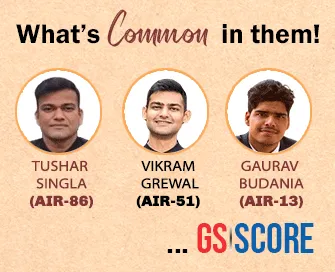

19th June 2025 (12 Topics)
Mains Issues
Context
Prime Minister Modi’s visit to Croatia on June 18, 2025, marks the first official visit by an Indian Prime Minister to the country since diplomatic ties were established in 1992. This historic outreach underlines Croatia’s growing strategic, economic, and cultural relevance in India’s evolving European policy.
India–Croatia Engagement: Key Dimensions
1. Geostrategic Significance- Adriatic Maritime Gateway:
- Croatia’s coastline along the Adriatic Sea (ports of Rijeka, Split, Plo?e) provides India with alternative maritime access to Europe amidst disruptions in the Suez and Red Sea corridors.
- These ports form part of the EU’s TEN-T core transport network, vital for integrating India's logistics and trade under initiatives like IMEC (India-Middle East-Europe Corridor).
- Gateway to Central & Eastern Europe:
- Croatia's proximity to key European markets (Hungary, Austria, Slovenia, Serbia) enhances India’s logistical outreach to non-traditional European destinations.
- EU & NATO Membership:
- Croatia, being a member of both the European Union and NATO, serves as a diplomatic bridge for India to indirectly access decision-making platforms and influence policy dynamics within these blocs.
- Useful for progress on stalled India-EU FTA negotiations.
- Multilateral Support:
- Croatia supports India’s permanent UNSC membership and aligns with India on sensitive issues (e.g., Jammu and Kashmir).
- Demonstrates diplomatic predictability and partnership in multilateral forums.
- Structured Defence Ties:
- Expansion of the 2023 MoU on Defence Cooperation to include:
- Defence production partnerships
- Training and joint military exchanges
- Industrial co-development and technology transfers
- Counter-Terrorism Solidarity:
- Croatia’s public condemnation of the April 22 Pahalgam terror attack illustrates convergence on global counter-terrorism norms.
- Trade Overview:
- Bilateral trade stands at USD 337.68 million (2023); key sectors include pharmaceuticals, IT, and engineering.
- Croatian ports offer EU entry points for Indian exports.
- Institutional Mechanisms:
- India-Croatia Economic Cooperation Agreement (2017)
- BIPA (2001)
- India-Croatia Startup Bridge (2021) — fostering collaboration in AI, green tech, and robotics
- Investment Partnerships:
- Indian commitment to invest in Croatian sectors like clean technology, agriculture, semiconductors, and maritime logistics (linked to Sagarmala Project).
- Space Diplomacy:
- India to extend space expertise and potentially partner in joint missions or tech transfer, marking a new domain in strategic cooperation.
- Digital & Clean Tech Emphasis:
- Croatia identified as a preferred partner in areas of green energy, AI, and digital infrastructure.
- Academic Linkages:
- Joint research between Indian institutions and Zagreb University, which hosts a reputed Indology department.
- Acknowledges over 60 years of Croatian engagement with Sanskrit and Indian philosophy.
- Mobility and Tourism:
- Upcoming India-Croatia Mobility Agreement to enhance ease of movement, tourism, and educational exchanges.
- Cultural Roadmap:
- A five-year cultural exchange plan to deepen people-to-people ties, yoga and Ayurveda already popular in Croatian society.
Comprehensive Analysis & Way Forward
- Strategic Rebalancing of European Diplomacy: India’s outreach to Croatia signifies a shift from Western-centric to pan-European diplomacy, engaging emerging EU members with decisive voices in consensus-driven institutions.
- Reducing China's Influence: Croatia’s limited engagement with China’s BRI presents a strategic opening for India to offer a democratic alternative through infrastructure and technological collaboration.
- Expanding IMEC’s Realization: Croatia can play a pivotal role in the India-Middle East-Europe Economic Corridor, enabling smoother trade diversification, enhancing maritime security partnerships, and reducing dependency on conflict-prone chokepoints.
- Need for Institutional Continuity: India must ensure annual Foreign Office Consultations, implementation monitoring of signed MOUs, and formation of a Joint Commission to deepen sectoral cooperation and resolve policy bottlenecks.


Mains Issues
Context
India and Canada have agreed to resume diplomatic engagement by restoring the presence of high commissioners in each other’s capitals following a bilateral meeting between the Indian Prime Minister and Canadian Prime Minister Mark Carney on the sidelines of the G7 Summit in Alberta. This marks a diplomatic thaw after the strained relations post the Hardeep Singh Nijjar episode in 2023.
India–Canada Relations
1. Historical Overview- Establishment of Ties (1947): Diplomatic relations established post-Independence; based on shared democratic and pluralistic values.
- Strains Over Time: Recurring issues such as the Kashmir plebiscite, Canada’s opposition to India’s nuclear tests (1974, 1998), and the Khalistan separatist movement.
- Khalistan Movement and Diaspora Politics
- Canada houses the largest Sikh diaspora outside India (~800,000+).
- Support from fringe elements in Canada has led to tensions—especially post-Nijjar incident (2023).
- Historical incidents include 1985 Air India bombing, 2018 Atwal controversy, and 2023 G20 diplomatic cold shoulder.
- Nuclear and Defence Relations
- Nuclear Cooperation Agreement (NCA), 2010: Facilitates Canadian uranium supply for India’s civilian nuclear program.
- Canada withdrew cooperation post-1974 Pokhran nuclear test, resumed only after Indo–US Civil Nuclear Agreement.
- Trade and Investment
- Bilateral Trade (2023): ~$5 billion (India’s exports: pharmaceuticals, textiles; Canada’s exports: lentils, wood pulp).
- Canadian Pension Funds: Major investors in Indian infrastructure and tech (CPPIB, CDPQ invested over $75 billion).
- Stalled CEPA: Comprehensive Economic Partnership Agreement negotiations have been stalled due to diplomatic tension.
- People-to-People & Education Ties
- Indian Students in Canada: Over 427,000 Indian students as of 2023, India being the top source of international students.
- Remittances: Canada is among top 10 sources; ~0.6% of India’s global remittance inflow.
- Indian Diaspora: ~1.6 million strong (NRIs/PIOs), actively participating in Canadian politics and economy.
- Indo-Pacific Cooperation
- Canada’s 2022 Indo-Pacific Strategy names India as a “critical partner” and balances China's influence.
- Cooperation is sought in maritime security, cyber governance, and democratic rule-based order.
- Track-II and Civil Society Diplomacy
- Growing importance of think tanks, academic institutions, and diaspora organisations to bridge misunderstandings.
- Crisis Points
- Canada’s allegations regarding India’s role in Nijjar’s assassination created a diplomatic vacuum in 2023–24.
- However, recent reset (2025 G7 sideline talks) led to the return of high commissioners and resumption of dialogues.
- Return of high commissioners agreed in June 2025 after PM-level meeting.
- Reactivation of bilateral working-level mechanisms and law enforcement cooperation.
- Focus areas for renewed cooperation: trade, mobility, counter-terrorism, and Indo-Pacific strategy alignment.
Way Forward
- Depoliticising Diaspora Issues: Stronger domestic engagement with diaspora and proactive engagement on separatist narratives.
- Early Conclusion of CEPA & FIPA: To insulate economic ties from political disturbances.
- Structured Strategic Dialogue: Revive regular strategic and security dialogues to align foreign policy interests.
- Balancing Soft Power Diplomacy: Expand collaboration in education, research, innovation, and civil society exchange.


Prelims Articles
Context
The Ministry of Education has released the Performance Grading Index for Districts (PGI-D) 2023–24, evaluating the performance of school education across India. Chandigarh, Punjab, Delhi, Kerala, Gujarat, Odisha, and others emerged as top performers, while Meghalaya was ranked lowest.
What is PGI-D?
- Performance Grading Index for Districts (PGI-D) is a comprehensive tool introduced by the Department of School Education and Literacy (DoSEL), Ministry of Education, to measure the relative performance of school education at the district level.
- It is based on 74 indicators grouped under 6 broad categories and 11 domains, with a total weightage of 600 points.
Key Categories & Domains:
- Categories:
- Outcomes
- Effective Classroom Transactions
- Infrastructure Facilities & Student Entitlements
- School Safety & Child Protection
- Digital Learning
- Governance Process
- Domains include:
- Learning Outcomes, Teacher Availability, Infrastructure, Student Entitlements, Digital Learning, etc.
Grading Methodology:
- ‘Utkarsh’ grade is awarded to districts scoring more than 90% of the total points.
- The grades are scaled down by 10% bands to classify subsequent levels.
- The index aims to identify gaps and drive policy-based interventions in school education.
Top & Bottom Performers:
- Top Performing States/UTs: Chandigarh, Punjab, Delhi, Kerala, Gujarat, Odisha, Haryana, Goa, Daman & Diu, Maharashtra, Rajasthan
- Bottom Performer: Meghalaya
- Average Performers: Puducherry, Tamil Nadu, Karnataka, Himachal Pradesh, West Bengal, Andaman & Nicobar Islands
Importance:
- Encourages competitive federalism by comparing district-level education metrics.
- Enables targeted interventions in weak areas such as infrastructure, teacher training, and digital inclusion.
- Facilitates data-driven governance and monitoring of NEP 2020 objectives.


Prelims Articles
Context
India launched Operation Sindhu in June 2025 to evacuate Indian nationals, primarily students, from Iran amid escalating hostilities between Israel and Iran. The Indian Embassy successfully evacuated the first batch of 110 Indian students, mostly from Jammu & Kashmir, via Armenia, marking the start of a broader contingency plan.
1. Nature of Operation Sindhu
- Type: Non-Combatant Evacuation Operation (NEO)
- Objective: Safe repatriation of Indian nationals from Iran amid regional conflict
- Launch Date: June 2025
- Conducting Authority: Ministry of External Affairs (MEA), with diplomatic support from bordering nations
2. Geopolitical and Strategic Significance
- Location: Iran (Northern region, primarily Tehran)
- Transit Country: Armenia (Evacuees crossed into Armenia via land before boarding special flights to New Delhi)
- Complicating Factors: Limited diplomatic leverage with Turkey and Azerbaijan; injuries due to Israeli airstrikes; disrupted essential services
3. India’s Past Evacuation Operations for Comparison
- Operation Raahat (2015): Yemen
- Operation Ganga (2022): Ukraine
- Operation Kaveri (2023): Sudan
- Operation Devi Shakti (2021): Afghanistan
- These precedents show India's consistent diplomatic strategy of citizen-first evacuation, often through third countries, ensuring safe passage and logistical coordination.
4. Evacuation Coordination and Role of Stakeholders
- Indian Embassy in Tehran: Coordination node
- Iranian Government: Provided assurance of cooperation and protection of foreign nationals
- Indian Citizens: Over 4,000 nationals estimated in Iran; significant student population from Kashmir and other states
5. Diplomatic Dependencies
- Positive Support: Armenia, Turkmenistan, Iraq
- Challenges: Turkey and Azerbaijan (less supportive relations due to geopolitical divergences)


Prelims Articles
Context
The United Nations Oceans Conference (UNOC), held recently in France, marked a major step forward for global ocean governance. A total of 56 countries have now ratified the Biodiversity Beyond National Jurisdiction (BBNJ) Treaty, also known as the High Seas Treaty, bringing it closer to becoming legally binding. The treaty will enter into force once 60 ratifications are reached.
1. What is the BBNJ/High Seas Treaty?
- Formal Name: Biodiversity Beyond National Jurisdiction (BBNJ) Treaty
- Adopted Under: UNCLOS (United Nations Convention on the Law of the Sea)
- Objective:
-
- Create marine protected areas in international waters
- Regulate access to marine genetic resources
- Conduct Environmental Impact Assessments (EIA) for high seas activities
- Promote capacity-building and technology transfer to developing nations
- Global Commons Focus: Applies to the high seas, which lie beyond the Exclusive Economic Zones (EEZ) of individual nations
-
2. Key Hurdles to Implementation:
- Equitable Benefit Sharing:
- Disagreements over commercial gains from marine genetic resources
- No final consensus on revenue-sharing from high-seas bio-extraction
- Enforceability Concerns:
- Treaty is legally binding only after 60 ratifications (currently at 56)
- Requires alignment of domestic laws with treaty provisions
3. Major Outcomes of UNOC 2025:
- Voluntary Global Commitments:
- EU: €1 billion for marine conservation & sustainable fisheries
- France/Polynesia: Largest marine protected area (5 million sq. km)
- New Zealand: $52 million for Pacific ocean governance
- Germany: €100 million for munitions clearance in North/Baltic Seas
- Panama, Canada & 35 others: Coalition for a Quiet Ocean (tackle noise pollution)
- Spain: 5 new MPAs; target 25% marine area protection
- Canada: $9 million for SIDS’ climate resilience
- UN agencies: One Ocean Finance initiative for blue economy investment
PYQ:With reference to the ‘United Nations Convention on the Law of the Sea’, consider the following statements:
Which of the statements given above are correct?
|


Prelims Articles
Context
Andhra Pradesh Water Resources Minister Nimmala Ramanaidu clarified that the proposed Polavaram–Banakacherla Lift Irrigation Project, which diverts surplus Godavari floodwaters to Rayalaseema, will not infringe on the allocated water share of upstream States, particularly Telangana. The statement comes amid objections by Telangana that the project violates the Godavari Water Disputes Tribunal Award and the Andhra Pradesh Reorganisation Act, 2014.
Polavaram Project:
1. Location and Context- Built on the Godavari River near Polavaram, located in West Godavari and East Godavari districts of Andhra Pradesh.
- It is classified as a multi-purpose irrigation and flood control project.
- The project has been accorded the status of a National Project by the Central Government.
- Irrigation: To create a gross irrigation potential of 4,36,825 hectares.
- Hydropower Generation: To generate 960 MW of hydroelectric power.
- Drinking Water Supply: To supply water to 5 lakh people in 611 villages.
- Inter-basin Water Transfer: Diversion of 80 TMC of water from the Godavari to the Krishna basin.
- Flood Management: Mitigates the flood impact in the Godavari delta region.
- Dam Span: ~2 km.
- Pier Height: 54 meters.
- Radial Spillway Gates: 48 gates, each 16m x 20m.
- Spillway Capacity: Designed to handle 50 lakh cusecs, exceeding the discharge capacity of China's Three Gorges Dam.
- Strategic Role: Plays a key role in Andhra Pradesh’s irrigation infrastructure and inter-linking of rivers.
- Ecological Concerns:
- Displacement of tribal populations.
- Submergence of villages and forest land.
- Potential ecological disruption in Eastern Ghats.
- Clearances: Environmental, forest, and R&R (Rehabilitation and Resettlement) clearances obtained with certain conditions.
- Declared as a National Project under the Andhra Pradesh Reorganisation Act, 2014.
- The Polavaram Project Authority (PPA), under the Ministry of Jal Shakti, oversees implementation.
- Central funding covers 100% of the remaining cost from April 2014.


Prelims Articles
Context
Tensions between Israel and Iran in June 2025 have led to a spike in global oil prices, with Brent crude futures rising nearly 9% amid fears of potential disruption in oil supplies, especially through the Strait of Hormuz—a key global oil transit chokepoint. Concerns have intensified due to Iran’s repeated threats to block this strategic waterway.
1. Strait of Hormuz: A Global Oil Lifeline
- It is a narrow chokepoint that connects the Persian Gulf to the Arabian Sea, bordered by Iran, Oman, and UAE.
- Around 20 million barrels/day of oil passed through it in 2024, accounting for ~20% of global petroleum liquids consumption.
- Major exporters using the Strait include Saudi Arabia, UAE, Kuwait, Qatar, Iraq, and Iran.
2. Impact of Disruption
- Closure of the Strait would lead to:
- Supply delays
- Higher freight and insurance costs
- Spike in global oil prices
- India, importing over 80% of its crude oil, would face elevated import bills even though it does not import directly from Iran due to U.S. sanctions.
3. India’s Preparedness and Risks
- India has diversified its oil import basket, reducing dependency on a single region.
- However, any sustained price rise may:
- Hurt India Inc’s profitability
- Increase import bill and inflation
- Delay private investment and reduce GDP growth
- ICRA’s projected GDP growth of 6.2% may face downward revision in case of persistent uncertainty.


Prelims Articles
Context
The Kerala State Forest Department has proposed to rename Aralam Wildlife Sanctuary in Kannur district as Aralam Butterfly Sanctuary, making it the first official butterfly sanctuary in Kerala. The proposal is under consideration by the State Board for Wildlife.
1. About Aralam Wildlife Sanctuary:
- Location: Kannur district, Kerala, in the Western Ghats.
- Established:
- Area: ~55 square kilometers.
- Forest Type: Tropical and semi-evergreen forests.
- Eco-Significance: Known for high butterfly diversity and endemic species of the Western Ghats.
2. Butterfly Conservation Importance:
- Butterfly Migration Events: Annual migrations like the Common Albatross Butterfly draw significant ecological interest.
- Collaborators: Forest Department and Malabar Natural History Society have conducted surveys since 2000.
- Key Event: Butterfly Migration Study held annually (January–February) as a flagship ecological event.
3. Ecotourism and Biodiversity Role:
- Aralam is a hub for ecotourism, butterfly watching, and nature-based studies.
- This designation aligns with India’s larger goals of species-specific conservation and community-driven ecotourism.
- It promotes awareness of insect biodiversity, critical for pollination and ecosystem health.


Prelims Articles
Context
Recent scientific studies and publications have highlighted the critical role of correct breathing techniques in improving overall health. The COVID-19 pandemic further intensified global focus on respiratory health, airborne transmission, and traditional practices like Pranayama and mindfulness breathing rooted in Indian and Buddhist systems.
1. Scientific Rediscovery of Breathing:
- Research indicates that most people breathe incorrectly, aggravating chronic conditions like asthma, anxiety, and high blood pressure.
- Books like “Breath” by James Nestor and studies in pulmology and neurobiology suggest that nasal breathing, resonant breathing, and techniques like Buteyko breathing significantly improve respiratory health.
- Airborne transmission of pathogens such as SARS-CoV-2 has now been globally accepted, overturning decades of emphasis only on droplet or contact-based transmission.
2. Traditional Practices and Ancient Wisdom:
- Pranayama (Yoga Sutras of Patanjali): Yogic breathing discipline that regulates breath flow to enhance vitality.
- Buddhist Anapanasati (mindfulness of breath): Viewed as a bridge between consciousness and bodily awareness.
- Practices like alternate nostril breathing (Nadi Shodhana) and deep diaphragmatic breathing are now being scientifically studied and validated.
3. Medical and Scientific Perspective:
- Modern medicine has begun acknowledging preventive potential of breathing regulation.
- Breathing techniques improve oxygen-carbon dioxide exchange, support parasympathetic nervous system activation, and reduce inflammatory responses.
- Still, clinical integration in mainstream healthcare remains limited despite empirical support.
4. Public Health Implication (Post-COVID World):
- Increased focus on air quality, aerosol dynamics, and respiratory health post-COVID-19.
- Emphasis on breath as a diagnostic and therapeutic indicator in both traditional and modern systems of medicine.


Editorials
Context
The Sixteenth Finance Commission is facing growing demands from States to increase their share in the divisible tax pool from 41% to 50%, amid declining actual transfers due to the Centre’s rising use of cesses and surcharges. This has reignited debates on fiscal federalism, vertical and horizontal devolution, and equitable revenue-sharing.
Vertical Devolution Challenges
- Shrinkage of Effective State Share: The share of cesses and surcharges in the Centre’s gross tax revenues rose from 12.8% (2015–2020) to 18.5% (2020–2024), reducing the States’ effective share from ~35% to ~31%, despite the de jure 41% recommendation.
- Demand for Increased Devolution: 22 out of 28 States, across political lines, have demanded an increase in vertical devolution to 50%, citing rising responsibilities, revenue constraints under GST, and limited fiscal autonomy.
- Centre’s Reluctance Due to Expenditure Pressures: The Union government cites increasing defence and capital expenditure as reasons to resist higher devolution, with the Commission's leadership hinting against major upward revisions due to fiscal balancing concerns.
Horizontal Devolution Inequities
- Population and Income Distance Bias: The current horizontal devolution formula gives high weightage to population and income distance, which penalises demographically stable and economically advanced States — particularly in southern India.
- Disincentive for Performance: Progressive States perceive the current formula as discouraging good fiscal management and developmental outcomes, thereby undermining the principles of efficiency and accountability.
- Need for Balanced Formula Revision: A reworked formula that incorporates fiscal effort, area, ecological sensitivity, and social indicators—alongside need-based transfers—can achieve equity without penalising governance performance.
Institutional and Policy Imperatives
- Regulating Cesses and Surcharges: The Finance Commission must consider recommending a cap on cesses and surcharges as a percentage of gross tax revenue, and suggest including surplus collections in the divisible pool to ensure transparency.
- Towards a Federal Compact: A modest increase in vertical devolution — for instance, from 41% to ~45% — would reflect cooperative federalism and address States' fiscal stress without compromising national priorities.
- Strengthening Fiscal Prudence and Equity: The Commission should aim to strike a balance between macroeconomic stability and equity by ensuring its recommendations incentivise revenue generation, efficiency, and inter-state equity.
Practice Question:
Q. "The Finance Commission plays a critical role in balancing the fiscal powers between the Union and the States. In the context of increasing reliance on non-divisible revenues by the Centre, critically analyse the challenges and suggest a roadmap for strengthening fiscal federalism in India."


Editorials
Context
India-U.S. bilateral relations, once projected as a cornerstone of 21st-century strategic convergence, are witnessing signs of drift. Diplomatic postures, policy signals, and institutional preferences from the U.S. side have raised concerns in India regarding the sustainability of mutual alignment, particularly in areas of regional security, economic cooperation, and technological exchange.
Emerging Sources of Friction
- Revival of Binary Frameworks: The recent recurrence of outdated “India–Pakistan hyphenation” in U.S. strategic discourse undermines India's long-standing efforts to de-link its global standing from regional rivalries. This is seen as a diplomatic regression, especially in light of India’s independent rise in global geopolitics.
- Incoherence in Trade and Investment Signals: Mixed messages regarding support for India’s manufacturing potential have disrupted confidence in the “China-plus-one” strategy. U.S. caution towards companies expanding to India contradicts the broader Indo-Pacific economic alignment objectives.
- Uncertainty in Skilled Migration Policies: Political volatility in the U.S. around the H-1B visa regime threatens the foundational tech and innovation linkages that drive bilateral cooperation. This policy unpredictability undermines the mobility of skilled professionals and disrupts shared innovation ecosystems.
Structural and Perceptual Gaps
- Contrasting Diplomatic Cultures: The U.S. tendency toward transactional diplomacy contrasts with India’s strategic culture, which emphasizes long-term vision, strategic autonomy, and multi-alignment. This divergence often leads to misaligned expectations.
- Enduring Institutional Biases: Parts of the U.S. security establishment continue to overestimate Pakistan’s role in regional counter-terrorism despite historical evidence of duplicity. This institutional inertia creates policy distortions detrimental to India’s core security interests.
- Misinterpretation of Strategic Autonomy: India’s principled stance of non-alignment and sovereign decision-making is at times misconstrued in Washington as inconsistency or hedging. Such interpretations ignore India’s strategic clarity rooted in its civilisational and constitutional ethos.
Constructive Pathways Forward
- Deepening Multilayered Engagement: India must expand its outreach in Washington through robust engagement with legislative bodies, strategic think tanks, and the Indian diaspora to reinforce the long-term logic of the partnership beyond executive-level diplomacy.
- Accelerating Domestic Economic Reforms: Strengthening regulatory frameworks, boosting infrastructure, and enhancing ease of doing business will consolidate India's image as a reliable investment and manufacturing hub aligned with Indo-Pacific economic priorities.
- Reframing Talent Mobility as Strategic Capital: Instead of viewing skilled migration as a concession, both nations should position it as a mutually beneficial pillar supporting technological innovation, entrepreneurship, and the co-creation of frontier industries.
Practice Question:
Q. “India–U.S. relations are built on shared democratic values and converging strategic interests. Yet, recent trends suggest a perceptible drift. Identify the structural and policy-level challenges in this partnership and suggest a roadmap to revitalise it in the changing global order.”


Editorials
Context
Israel’s recent military strikes against Iran have triggered a global legal debate on whether these actions are permissible under Article 51 of the UN Charter. The question revolves around whether such strikes qualify as acts of self-defence or amount to aggression, thereby violating international legal norms. This brings into focus evolving interpretations of "imminence" and "anticipatory self-defence" in international law.
Legal Foundations of Use of Force
- Prohibition under UN Charter: Article 2(4) of the United Nations Charter prohibits the threat or use of force in international relations, permitting exceptions only under Chapter VII or Article 51 (self-defence after an armed attack).
- Limits of Self-Defence: Article 51 allows self-defence strictly in response to an "armed attack," requiring the use of force to be necessary and proportionate in nature, with a restrictive interpretation upheld in international jurisprudence.
- Violation Equals Aggression: Any use of force not qualifying under Article 51 is deemed illegal and could amount to “aggression”—a war crime under customary international law and the Rome Statute of the International Criminal Court (ICC).
Debates on Pre-emptive or Anticipatory Self-Defence
- Conceptual Distinction: Pre-emptive self-defence refers to the use of force against a perceived future threat, while anticipatory self-defence is based on an imminent armed attack—terms often used interchangeably but debated differently in legal theory.
- Caroline Doctrine Standard: Based on the 1837 Caroline incident, valid anticipatory self-defence must satisfy strict conditions: the threat must be “instant,” “overwhelming,” and leave “no choice of means and no moment of deliberation.”
- Imminence Interpretation Conflict: A narrow interpretation of “imminence” implies temporally proximate threat, while a broad view could dangerously justify unilateral aggression based on conjecture—contradicting the Charter’s intent to restrict arbitrary use of force.
Legal Assessment of the Current Scenario
- Lack of Imminent Threat Proof: Israel’s justification based on Iran’s potential nuclear capability fails the test of immediacy required for lawful anticipatory self-defence, as no attack was temporally impending.
- Non-State Actor Attribution Doctrine: For force to be used lawfully against a state for acts of non-state actors, there must be clear and direct attribution, which has not been established in this case under the Articles on State Responsibility.
- Importance of Upholding International Law: Despite frequent violations, international law remains the sole normative system to assess and constrain state behaviour; undermining it invites legal nihilism and strategic instability.
Practice Question:
Q. “Discuss the evolution and limitations of the concept of anticipatory self-defence under international law. In light of recent developments, critically examine its implications for global peace and security.”




